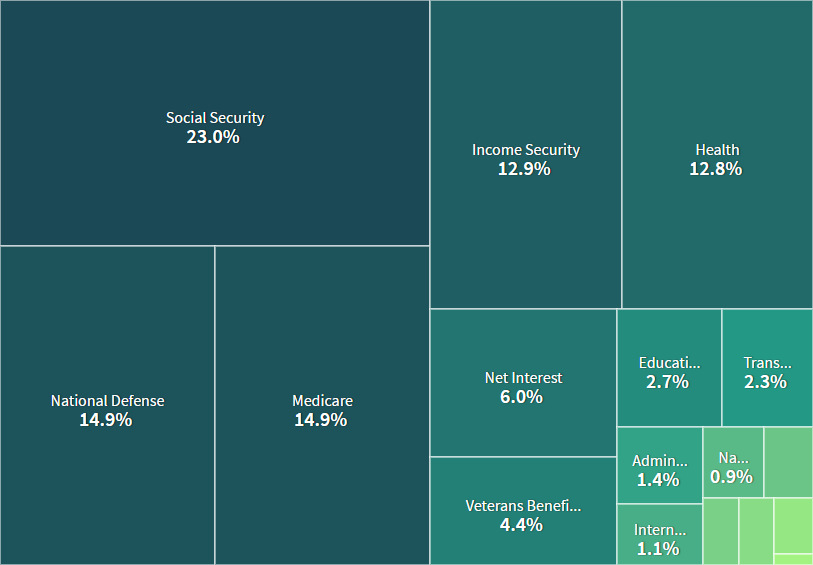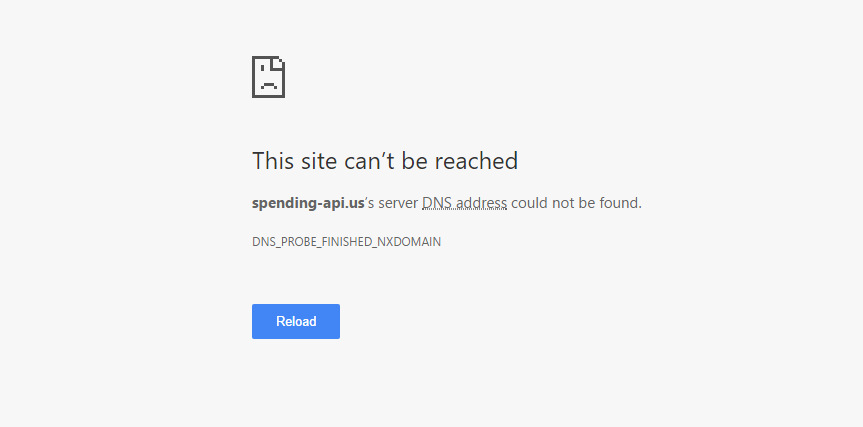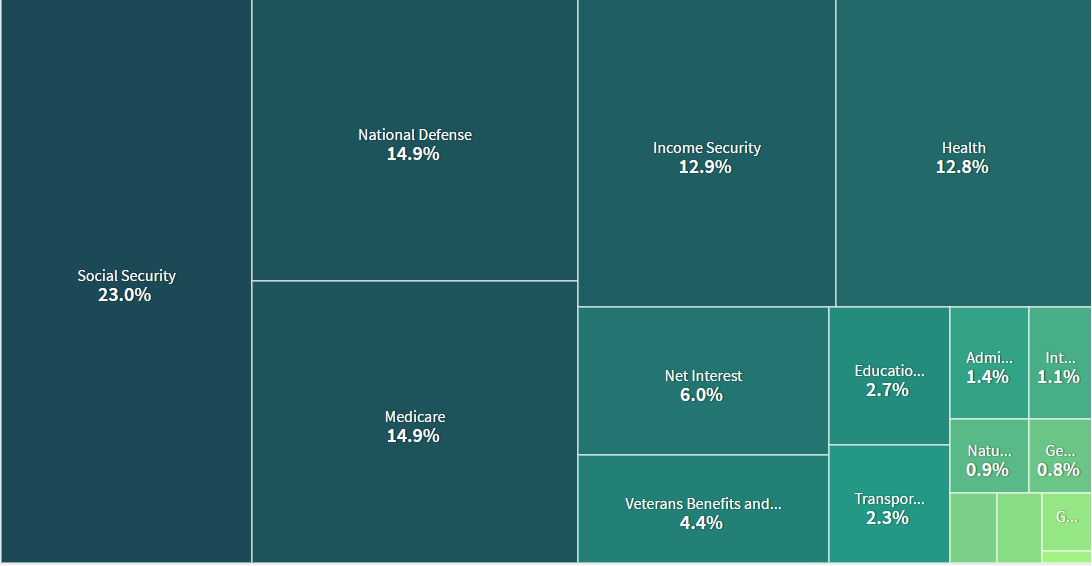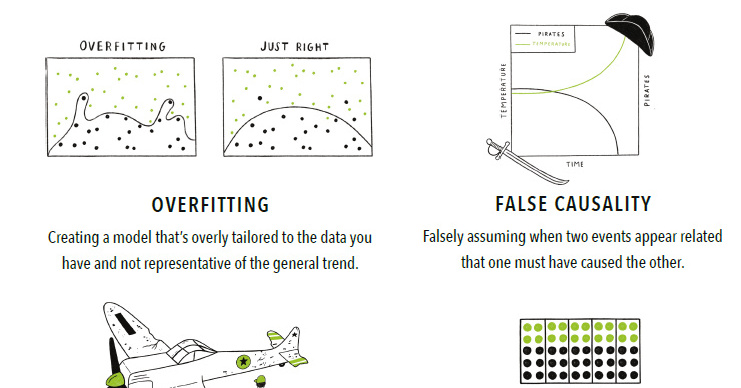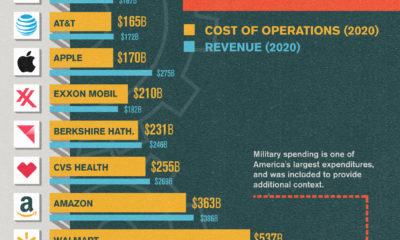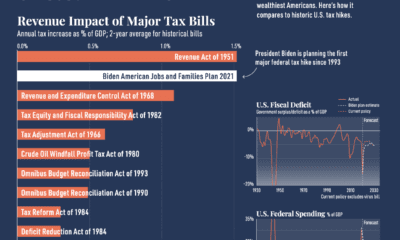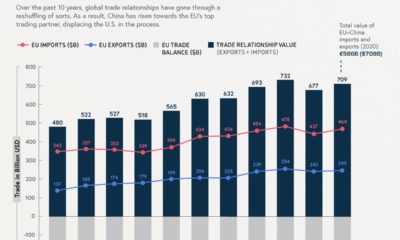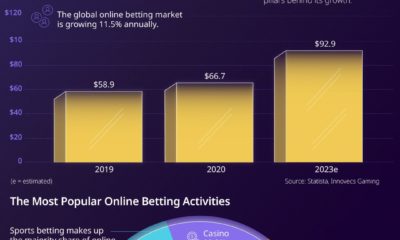The significance of this cannot be overstated – every single department of the government is now reporting data to the U.S. Treasury in a common format, and this information is being published online at USASpending.gov. The data puts records of accounts, budgets, grants, and contracts all in one place, and links this information together in way that has never been done before. Everyday citizens, journalists, and data scientists will be able to see how the government spends money with one consolidated view. Further, this harmonization of accounts will also help to boost transparency, making it easier to spot inefficiencies, waste, and fraud at the federal level. Here’s an example of a “big picture” output – a view of all 2016 spending in one easy chart.
For the interactive version of the above chart that details $3.85 trillion of federal expenditures and what is included in each account, go to the USASpending.gov site. To dive deeper into millions of data points for each individual transaction record, you’ll probably want to access the API.
It’s Not Perfect, Yet
As with all large government projects, it’s probably not a surprise to learn that the project isn’t exactly working optimally yet. Upon mucking around on the site, certain maps are not yet generating, and the API site was down when we tried to access it:
Part of the problem is that the DATA Act of 2014, which laid the groundwork for the initiative, had specified a deadline (May 9, 2017) for all agencies to be reporting data in a unified format. Obviously, harmonizing thousands of legacy financial reporting systems from dozens of federal departments is not an easy task. Deloitte, in a joint report with the Data Coalition trade association, recognizes these technical challenges, while also outlining additional problems that must be addressed with the DATA Act and corresponding systems by 2022.
Jefferson’s Vision
Hudson Hollister, the Founder and Executive Director at Data Coalition, outlined the significance and challenges of harmonizing government data in a blog post today. He also referenced something interesting, which is that this idea was outlined initially by Thomas Jefferson in the early 19th century. In fact, it was in 1802 that Jefferson wrote to his Treasury Secretary to tell him that the government’s finances were too convoluted for Congress to understand, and this complexity enabled debt and spending to spiral out of control. His solution at the time? To harmonize all government expenditures in one place: – Thomas Jefferson, Library of Congress (1802) Hollister notes that it is only now that Jefferson’s vision has been realized. Hopefully, with some refinement and continued buy-in from government and industry stakeholders, this means more transparent government finances for the foreseeable future. on Even while political regimes across these countries have changed over time, they’ve largely followed a few different types of governance. Today, every country can ultimately be classified into just nine broad forms of government systems. This map by Truman Du uses information from Wikipedia to map the government systems that rule the world today.
Countries By Type of Government
It’s important to note that this map charts government systems according to each country’s legal framework. Many countries have constitutions stating their de jure or legally recognized system of government, but their de facto or realized form of governance may be quite different. Here is a list of the stated government system of UN member states and observers as of January 2023: Let’s take a closer look at some of these systems.
Monarchies
Brought back into the spotlight after the death of Queen Elizabeth II of England in September 2022, this form of government has a single ruler. They carry titles from king and queen to sultan or emperor, and their government systems can be further divided into three modern types: constitutional, semi-constitutional, and absolute. A constitutional monarchy sees the monarch act as head of state within the parameters of a constitution, giving them little to no real power. For example, King Charles III is the head of 15 Commonwealth nations including Canada and Australia. However, each has their own head of government. On the other hand, a semi-constitutional monarchy lets the monarch or ruling royal family retain substantial political powers, as is the case in Jordan and Morocco. However, their monarchs still rule the country according to a democratic constitution and in concert with other institutions. Finally, an absolute monarchy is most like the monarchies of old, where the ruler has full power over governance, with modern examples including Saudi Arabia and Vatican City.
Republics
Unlike monarchies, the people hold the power in a republic government system, directly electing representatives to form government. Again, there are multiple types of modern republic governments: presidential, semi-presidential, and parliamentary. The presidential republic could be considered a direct progression from monarchies. This system has a strong and independent chief executive with extensive powers when it comes to domestic affairs and foreign policy. An example of this is the United States, where the President is both the head of state and the head of government. In a semi-presidential republic, the president is the head of state and has some executive powers that are independent of the legislature. However, the prime minister (or chancellor or equivalent title) is the head of government, responsible to the legislature along with the cabinet. Russia is a classic example of this type of government. The last type of republic system is parliamentary. In this system, the president is a figurehead, while the head of government holds real power and is validated by and accountable to the parliament. This type of system can be seen in Germany, Italy, and India and is akin to constitutional monarchies. It’s also important to point out that some parliamentary republic systems operate slightly differently. For example in South Africa, the president is both the head of state and government, but is elected directly by the legislature. This leaves them (and their ministries) potentially subject to parliamentary confidence.
One-Party State
Many of the systems above involve multiple political parties vying to rule and govern their respective countries. In a one-party state, also called a single-party state or single-party system, only one political party has the right to form government. All other political parties are either outlawed or only allowed limited participation in elections. In this system, a country’s head of state and head of government can be executive or ceremonial but political power is constitutionally linked to a single political movement. China is the most well-known example of this government system, with the General Secretary of the Communist Party of China ruling as the de facto leader since 1989.
Provisional
The final form of government is a provisional government formed as an interim or transitional government. In this system, an emergency governmental body is created to manage political transitions after the collapse of a government, or when a new state is formed. Often these evolve into fully constitutionalized systems, but sometimes they hold power for longer than expected. Some examples of countries that are considered provisional include Libya, Burkina Faso, and Chad.
